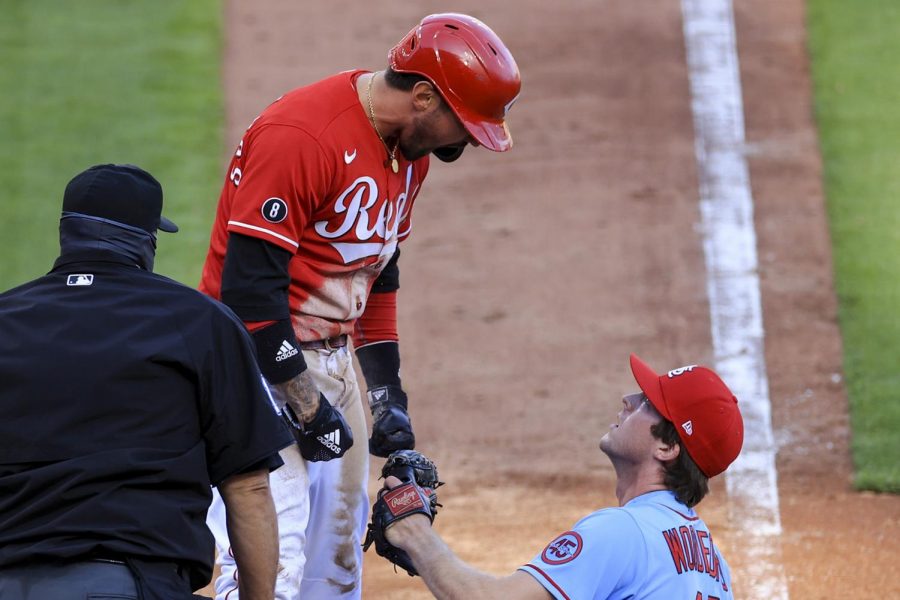With Historic Offensive Lows, MLB Needs to Make Changes
Another day, another no-hitter in this 2021 MLB season. John Means became the third pitcher to officially throw a no-hitter this season today, with Madison Bumgarner’s 7-inning no-hitter continuing to stir controversy among fans and those at Elias Sports Bureau, the league’s statistics agency. It’s clear that hitting is as hard as it has ever been. With the rise of velocity and spin rate, pitchers have found a clear upper hand. Batting average has reached an all-time low, strikeouts and walks are at an all-time high, and many fans, especially older fans, have expressed their dislike of where the game has headed.
While the analytics of the game are improving, and players’ skills are evaluated more accurately than ever before, these stats have made the game less entertaining for some. With the ball being put in play less, more pitches being thrown, and the average time of games rising every year, games seem to be moving at a crawl compared to how they were played following the lowering of the mound in 1968. No longer do hitters come to the plate with the goal of putting the ball in play, but they instead are willing to sacrifice a higher strikeout rate for harder contact. Oftentimes, at-bats will stretch 5-7 pitches, with hitters looking for one of the three true outcomes, a walk, strikeout, or home run. Fans must wait for what seems like forever to see one piece of the action.
During the Tigers vs. Yankees game on May 2nd, I remarked to myself how much Corey Kluber was striking out batters compared to his days in Cleveland. While this start against Detroit was an anomaly for Kluber, who has not struck out 10 since 2017, it still symbolizes the direction of baseball. Even pitchers like Kluber, who rely on a sinker/changeup mix, are reliant on the strikeout in their dominant outings. While this three true-outcome approach to the game helps teams win games in the long run, it does accentuate the criticisms faced by the MLB for years. As student Shane Tian ‘21 said, “The sport is honestly boring to me. They don’t market their game well, there is no salary cap, and the pace of play is just slow.” While the game has evolved to increase the quality of competition, that product may not be what the fans want.
The overall entertainment value of the sport must grow in the years to come if baseball wishes to grow, or even maintain its spot as the 2nd-largest sports league in the United States. As Shane said, the game is boring. In recent years, creating pitch clocks and mound visit limits have done little to help, and Rob Manfred’s plans of growing the game have largely missed the mark, doing nothing to limit the average length of a game.
While the league can not force pitchers to revert back to where they were ten years ago, it can decrease their swing and miss potential. First, the league would need to crack down on pine tar and other foreign substances, which can boost a pitcher’s RPM by 300-400, and have been a favorite of many pitchers. Trevor Bauer is at the forefront of this movement, and he is an open user of this illegal substance. If the league cracks down on this substance use, it would make it at least somewhat easier for hitters to put the ball in play at a higher clip. Also, a more drastic change would be to move the mound back. However, this would change baseball not only in the MLB, but likely for thousands across the country. From teenagers to college players to major leaguers, the fields would have to be adjusted, and players who have already established themselves at 60 ft. 6 in would have to reacclimate to the new distance. While this change might seem drastic now, it might be a necessary change 5-10 years in the future.
Marketing of the game would have to change as well, and the MLB would have to actually stick to their marketing slogans in practice. With so many young, marketable players, the MLB needs to take advantage of them. With Tatis’ bat flip, the Reds belligerence, and Bauer’s antics, both on and off the field, there is a surplus of marketable talent. However, with every “fun” ad campaign they make, they fail to make progress on their field. Nicholas Catellanos of the Reds was suspended for flexing on Cardinals’ pitcher Jake Woodford after scoring earlier this season, and to the backlash of many, this ruling was upheld. This seems like the fun, electric content the MLB wants, but their suppressive actions do not reflect this.
Like the NBA has done under Adam Silver, the MLB needs to allow player’s emotions to flow freely on the field of play, not remain bottled up like the baseball players have historically been taught to do. In doing so, the MLB would cater more to the younger generations, who focus less on the game itself than past generations. As Daniel Novoa ‘21 said, “I watch sports just as much for the drama as I do for the game.” Simply put, the MLB needs to stop with its superficial changes, such as pitch clocks and empty marketing campaigns. Instead, it needs to start creating real changes with its on-the-field product, starting with cracking down on foreign substances and allowing players to express themselves freely on the baseball diamond.






